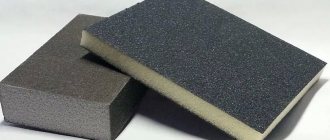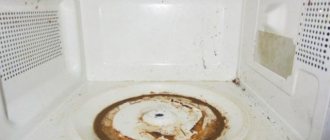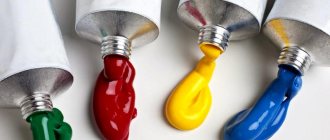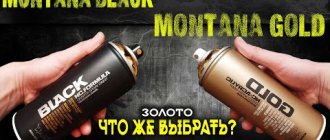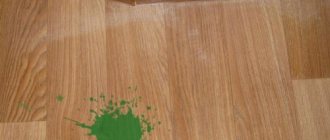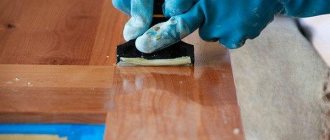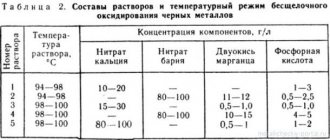Stainless steel is a material that is often used in production. Often, due to corrosion resistance, objects of this type are not painted. But there are situations when the natural appearance of metal needs to be hidden. When faced with such a need, it is worth remembering that stainless steel is difficult to paint due to insufficient adhesion. It is difficult to paint such products, so the right decision would be to turn to professionals.
The most reliable and modern method is powder coating of stainless steel. The composition is applied in a special chamber using a spray gun. Next, the part is sent to a drying oven for polymerization at a temperature of 150⁰C-180⁰C. A durable surface is formed that is resistant to mechanical stress.
Powder coating of stainless steel allows you to obtain a technologically flawless and durable
Stainless steel products today can be anything; they go well with other natural and artificial materials.
Stainless steel products are hygienic and resistant to mechanical and chemical influences. Finished products can be given any decorative surface - matte, sanded, polished and colored surface. It all depends on imagination and desire. High-tech powder paints make it possible to ensure stable quality, fulfill orders in the shortest possible time, and the ability to manufacture according to individual projects. The technology of this type of painting involves applying a coloring powder to the product, including stainless steel, with its further melting and polymerization in a specially equipped chamber at temperatures up to 200°C. The result is a coating characterized by high corrosion resistance, resistance to temperature and climatic changes, mechanical and chemical influences. This coating for stainless steel provides high decorative properties because it applies to the surface very evenly, not excluding corners and turns. This technology will give the product such important performance properties as resistance to corrosion and temperature changes from -60 to +150°C, as well as impact resistance of the coating. This coating is very resistant to chips and scratches, and of course, with the help of it you can create any color and different texture of the design. To create the desired texture and color, various fillers and pigments of the desired shade are introduced into the material.
Painting stainless steel with powder paint is a worthy alternative to the technology of applying liquid paints and varnishes, which are not able to compete with other types in their performance properties. The consumption of material when painting a similar area is less, since it is applied in one layer, while oil or other liquid dyes are usually applied in multi-layers. The polymer coating does not peel off, as often happens with oil and enamel paints, does not fade from exposure to ultraviolet rays, and is resistant to external aggressive environmental influences, because it is reliably connected to the surface being treated. And of course, the process itself is environmentally friendly, and the items have a monolithic coating and an attractive, finished appearance. Application is carried out using the most modern equipment for powder coating and compliance with all technological standards, which ensures a guarantee of quality. The powder material has no waste, it is easily collected and reused for production. Thanks to electrostatic spraying, coating application will take several times less time than any other. It dries in about half an hour. It is also very important for high-quality processing to properly prepare the surface for the procedure.
Painting stainless steel, like other metals, requires complete cleaning of the surface to be treated. To do this, it is subjected to degreasing and phosphating. After these steps, the product is washed and dried. Only after this, layers with oppositely charged particles are applied to the stainless steel to be painted using a spray gun, which settle on the surface. Application is carried out in special chambers, which reduces the loss of consumables to a minimum and ensures the safety of the process.
Painting stainless steel creates a technologically flawless, resistant, durable, and beautiful coating. At the request of the customer, the surface can be glossy, matte, smooth, voluminous, silver, gold, marble or wood. You can choose a wide variety of colors and shades.
There are different types of powder coatings, but all of them can be used for stainless steel. Depending on the type of film formation, they are divided into thermoplastic and thermosetting. The former form a covering layer without chemical transformations due to the fusion of particles and cooling of the melts, so the films are thermoplastic and often soluble. Thermosets form a coating layer as a result of the fusion of particles and subsequent chemical reactions. The coatings are neither fusible nor soluble. This approach is widely used in mechanical engineering and where it is needed to increase durability, hardness and high decorative properties.
How to paint stainless steel yourself at home
Stainless steel is popular among consumers due to its high quality characteristics. This metal serves as a material for the production of a wide variety of products, the surface of which can be matte, polished or painted. Let's look at how to paint stainless steel.
Features of powder coating
Stainless steel paint can be powder or liquid; it is rarely found in aerosols.
Experts prefer powder paint. It can be applied using a spray bottle.
Painting stainless steel with powder paint further forces the product to melt at a temperature of 200 degrees. This method can only be used if special ovens are available. The resulting film has many advantages:
- creates a corrosion-resistant material;
- prevents damage to the surface;
- not afraid of various temperatures and the effects of aggressive environments;
- an absolutely even layer is obtained;
- Using special additives you can get the desired color.
This method of painting various stainless steel products at home is very difficult. By applying powder paints for steel, you can achieve the desired effect and get a wide selection of colors and shades. The method of powder coating of stainless steel can only be used in enterprises with special thermal equipment.
The powder coating manufacturing process requires maintaining high temperatures. Such processing under production conditions is carried out in thermal ovens. Only removable products can be painted in this way; painting at the installation site is not possible.
Powder coating lasts a long time and retains its original appearance and color.
Painting steel at home
At home, liquid paint for stainless steel is more suitable. Most often it is produced in aerosols. The preparation of the steel surface must be approached responsibly. The painting process is similar to working with ordinary steel. Liquid paint for stainless steel is applied only to the prepared surface. The durability of the coating depends on the preparation.
The preparation plan for painting steel is as follows:
- The surface to be painted is cleaned with sandpaper or a grinding machine.
- Next, it is treated with degreasers, the best of which is a solution of baking soda and water.
Knowing how to paint stainless steel and how to prepare it for it, you can achieve excellent results. The rules for applying liquid paint or aerosols are as follows:
- The stainless steel paint is thoroughly mixed.
- When painting, the spray bottle or can must be held perpendicular to the material being painted.
- In order for the applied paint and varnish material to adhere perfectly to the surface of a stainless metal, it must be applied in two layers.
- To add shine to the surface, you can apply varnish on top.
Stainless steel material is not painted in conditions of high humidity. The paint is applied to a completely dry and grease-free metal surface.
On video: painting stainless steel at home.
Choosing the right paint
When deciding what to paint stainless steel with, you need to study the properties of available paints and methods of using them. In addition, you need to decide on the choice of paint.
The range of powder paints results in a unique decorative effect. As a result of this coloring, a protective film is formed. The paint is applied with a spray gun, and then the product is subjected to heat treatment at a temperature of two thousand degrees. Naturally, this method of coloring is impossible to carry out at home.
Powder coating results in coatings of a wide variety of colors. Such products can be selected for any interior. Powder coating is strong and durable.
As for painting various products with liquid paint yourself, it is easier to get a black color. In addition, the stainless steel surface can be painted to resemble wood. The following advantages of powder coating include:
- waste-free production using powder paint;
- durability of the painted coating;
- minimum costs for such work.
When painting stainless steel, use the same dye as for plain steel. The only difference is the preparation. When choosing a method for painting stainless steel, you need to proceed from your capabilities. To extend the life of stainless steel products, you need to correctly decide on the choice of material for painting them.
How to paint stainless steel
The dyeing workflow is carried out under certain conditions. Separately, it should be noted that stainless steel is painted by the method of forming an oxide film on its surface. This method requires oxygen in the atmosphere. As a result, the painted surface changes color thanks to the oxide film, leaving its original appearance intact. A matte or shiny product will remain that way.
The staining of stainless steel and the resulting color depends on the following factors:
- differences between voltages;
- current density;
- time.
Thanks to this well-known method of electrochemical coloring, it is possible to create a unique color scheme of various colors and shades. Stainless steel also becomes more protected in its properties.
A fairly common method of applying a coloring composition to stainless steel is powder coating. The process of applying such a dye does not take much time. The addition of different pigments produces different colors. Powder coating can produce a matte or glossy surface. But without the help of special equipment, this coloring method cannot be carried out.
Features of stainless steel
Corrosion-resistant steel is a widely used material. The variety of physical properties of stainless steel is explained by the addition of various impurities during its production. The characteristics of the material are affected by the amount and type of additives. Therefore, among the brands there are alloys that over time (with prolonged use in an aggressive environment) lose their anti-corrosion properties. For this reason, a problem arises regarding methods of protection, and painting becomes a solution. To understand how to paint stainless steel, you need to find out what properties this material has. Features of stainless steel in comparison with other metals and alloys:
- Increased strength. Due to its strength, steel copes with significant physical loads without losing its characteristics (primarily its shape).
- Impact resistance. Changes in operating conditions and aggressive environments do not lead to loss of properties, which increases the service life of stainless steel structures.
- High temperature resistance. Due to its heat resistance, steel does not lose its shape, does not change dimensions and retains its properties at high temperatures.
- Environmentally friendly. Minimized oxidation processes reduce the level of harmful effects on the environment. The absence of harmful impurities contributes to the fact that stainless steel is widely used in the food industry.
- Corrosion resistance. A number of alloys are not susceptible to rust even when exposed to alkali and acid.
- View. Stainless steel is clean, shiny and retains these properties for a long time.
What else can you coat stainless steel with?
The steel surface can also be coated with high-quality oil paint, a metal-grade wax coating, and even nail polish. Naturally, the latter can only make inscriptions and otherwise decorate the surface, and not paint it fully.
You can also use patina. These chemical materials are created to change the color or surface of a metal. However, some of these products are applied cold and some are applied hot. After application, the surface is often coated with wax.
What is powder paint
Powder coatings are mixtures of solid particles, consisting of many components. The basis is a powder-type polymer and a coloring pigment. Depending on the area of application of the paint, the components of the composition are different. The main additives are:
- fillers (aluminum oxide, titanium dioxide);
- hardeners (for example, epoxy resin);
- resins that create a protective film on the treated surface;
- acrylates.
Stainless steel paint in powder form does not contain solvents, so it is not a flammable or toxic paint composition. If the technology for painting a polished stainless steel surface is followed, the harmful impact on the environment and humans tends to zero. The advantage of powder paint is its flowability that persists over time; paintwork components do not thicken or stick together. This property eliminates the need to dilute the paint before use. Flowability also determines the surface treatment technology - the coloring composition is sprayed onto stainless steel. The paint particles receive a charge, while the workpiece carries the opposite charge. Therefore, the powder sticks to the surface. Subsequently, the adhered particles are subjected to heat treatment in an oven (polymerization).
Choosing the right paint
When deciding what to paint stainless steel with, you need to study the properties of available paints and methods of using them. In addition, you need to decide on the choice of paint.
The range of powder paints results in a unique decorative effect. As a result of this coloring, a protective film is formed. The paint is applied with a spray gun, and then the product is subjected to heat treatment at a temperature of two thousand degrees. Naturally, this method of coloring is impossible to carry out at home.
Powder coating results in coatings of a wide variety of colors. Such products can be selected for any interior. Powder coating is strong and durable.
As for painting various products with liquid paint yourself, it is easier to get a black color. In addition, the stainless steel surface can be painted to resemble wood. The following advantages of powder coating include:
- waste-free production using powder paint;
- durability of the painted coating;
- minimum costs for such work.
When painting stainless steel, use the same dye as for plain steel. The only difference is the preparation. When choosing a method for painting stainless steel, you need to proceed from your capabilities. To extend the life of stainless steel products, you need to correctly decide on the choice of material for painting them.
Difficulties in painting stainless steel
Powder coating of stainless steel is a method that meets the characteristics of the surface being treated. Smooth steel rejects the approach of using conventional liquid paints and varnishes, since the latter simply do not adhere to it. The adhesion of stainless steel is low, which adds to the complexity of painting. The solution to the problem is the choice of an adequate coloring composition and adherence to technology. At home, painting stainless steel with powder is difficult. Additional equipment will be required, namely an installation for imparting a charge to paint particles, a spray gun, and an oven for polymerizing the paint composition. It is commercially available, but if you have the skills and experience, you can make it yourself. Powder coating is a technology most often used in industrial settings.
How and how to paint stainless steel with your own hands at home
This type of metal, such as stainless steel, is used to produce a large number of objects around us. Often the latter are unpainted, since they do not need protection from moisture, and at the same time they can effectively shine with their metal surface.
So the coloring here is mainly due to individual design goals.
Therefore, if you, say, want to paint corrugated stainless steel black, this means that this color is necessary as part of the interior design, and it is more preferable than the natural color of the metal.
Difficulties in painting stainless steel
Faced with the need to paint stainless steel, many understand the complexity of the process - with the standard approach, the paint simply does not adhere to this smooth surface, since the material lacks adhesion. However, this does not mean that it is impossible to paint this metal.
Preparatory stage
Powder paint for stainless steel should be applied to the prepared surface. The preliminary stage involves the following:
- Inspection of processed parts to identify defects (scratches, chips). Shallow imperfections on a smooth stainless steel surface can be preserved to improve adhesion.
- Making the material being painted rough. If we are talking about small parts, then a metal brush is suitable for processing. In other cases, it is better to use a grinder with an appropriate attachment. A medium-grit abrasive disc will do.
- Cleaning the part from processing products. A wet cloth is suitable for removal. The part must be thoroughly wiped.
- Degreasing. Grease stains on stainless steel will impair paint adhesion, so alkaline or acidic compounds are used. When degreasing with such compounds, it is necessary to observe safety precautions (ventilate the room, wear gloves and a respirator). At home, you can degrease the part using a soda solution (4 grams of soda per 100 ml of water).
- Drying the part before painting.
Personal protective equipment is required during the preparatory stage and during painting.
Painting process
In industrial conditions, before painting, the parts being processed are washed in chambers and dried in ovens; a conveyor process is organized there. At home, prepared stainless steel can be dried on a table or on a radiator. The powder is applied by spraying from a gun. The equipment is made in such a way that the paint particles receive one charge, and the part being painted receives the opposite charge. Under such conditions, the powder adheres to the stainless steel in an even layer. Industrial painting is completed quickly, but at home this process will take longer. The technology for applying paint on stainless steel in powder form involves electrostatic or turbostatic spraying. The first option involves an external charge source, the second method allows particles to be charged by rubbing them against the walls of the turbine. The second stage of painting is melting the paint in an oven at a temperature of 150-220 degrees. Powder particles melt at high temperatures and form a film on stainless steel, which subsequently hardens. Industrial polymerization chambers are designed for changing reflow conditions (sudden increase and decrease in temperature, inclusion of recirculation of air flows, etc.). Do-it-yourself ovens are more primitive, but purchasing industrial equipment for personal (usually single) purposes is impractical.
Features of coloring
There are two types of paint used to paint stainless steel: powder and liquid (sometimes in aerosols). With their help, you can give the product almost any color, for example, black, white, etc.
Coloring material in powder form
Many experts recommend using powder paint. It can be applied using a spray bottle. After application, the product must be melted in a chamber with high air temperature (2000°C). The result is a film that has a lot of advantages:
- The product becomes resistant to corrosion.
- The film formed by the paint prevents scratches and other similar damage.
- The surface painted with this dye is not afraid of temperature changes and exposure to chemicals.
- The paint layer is perfectly even. Thanks to this, the surface looks neat.
- When powdered dye is combined with fillers, different textures, colors and effects can be achieved.
When applying powder paints to stainless steel, you can achieve several effects:
- glossy or matte;
- flat or, conversely, volumetric;
- gold or silver;
- imitating wood or marble.
By the way, there are paint compositions that help paint any other surface to look like stainless steel.
Generally speaking, powder paint technology has many advantages:
- It only needs to be applied in one layer.
- It has a high level of adhesion, which is especially suitable for stainless steel.
- There is no waste left during the painting process. Powder that is not used can be collected and used another time.
- The workflow takes very little time.
Painting stainless steel with powder dye consists of several stages:
- First you need to thoroughly clean the work surface from settled dust and dirt.
- Apply a special compound to the stainless steel that can degrease it.
- Next, it is recommended to apply a layer of a substance that, after drying, forms a durable protective film (usually phosphate).
- The next stage is washing the surface and drying it.
- Now the product needs to be placed in a chamber in which it will be coated with paint.
- The final part of the work is melting the surface using high temperature.
This technology has one significant drawback. It lies in the fact that it is not possible to carry out such painting at home. The process requires expensive equipment.
Liquid coloring compounds
If you need to paint stainless steel at home, you can use liquid paint, which is often available in aerosol form. The working process is similar to processing regular steel. The only differences are in the preparatory procedures.
Preparation should be taken as seriously as possible. To a large extent, it determines how durable the coating will be.
It should be carried out approximately according to this plan:
- Clean the work surface with sandpaper. The ideal option is to use a special grinding machine. The nozzle should have a medium grit level. The machine must be set to the highest speed. Don't press too hard on the surface. Movements should be smooth and careful.
- It is recommended to treat the cleaned surface with degreasing compounds based on alkalis or acids. If you don’t have any on hand, you can prepare a degreasing solution yourself. To do this you will need regular baking soda and water. To prepare 100 ml of solution you will need 4 g of soda and 96 ml of water. This is a fairly effective method of surface treatment. In addition, it does not require additional costs for the purchase of chemicals.
Painting stainless steel: application methods and typical mistakes when coating the alloy
You can place an order by phone
Our specialists will be happy to help you
Unpainted steel parts are often susceptible to corrosive changes after exposure to adverse environmental factors or aggressive chemical environments. Corrosion causes significant corrosion of solid metal, deforms and damages it, depriving it of its main functional purpose.
The use of metal structures in various fields of construction and industry will be most effective if the alloy is coated with a protective composition that ensures an extended service life and ease of maintenance.
Paint coating has a decorative function. Professional painting allows you to adapt the stainless element to the surrounding interior, making it suitable for specific architectural or design solutions.
Painting methods
Paintwork
Painting stainless steel requires careful preparation of the surface, which is cleaned of visible defects. If the master does not carry out this work, then there is a high probability of the color coating peeling off. The ideal device for processing the external surface of a steel part is an angle grinder. After exposure to stainless steel, the surface should be degreased using special acids or alkaline substances.
Car paint is used as a coloring agent, supplemented with a large amount of hardener, which is necessary for quick drying. The color composition is applied in 2 layers using a spray bottle. The greatest decorative effect can be achieved by sealing the paint with a layer of varnish.
Powder coating
Before painting, the work surface must be cleaned and degreased. The specialist carries out phosphating, washing and drying of the steel part. The powder coating method involves applying a coating in 1 layer. After painting, the part is sent for melting and polymerization in a special heat chamber. The painted surface dries completely within half an hour.
The introduction of special pigments and fillers into the coloring composition provides a variety of color combinations and textures. So, after powder coating you can get spectacular voluminous and flat, matte and glossy surfaces. Paint can imitate popular natural textures, for example, wood or marble, gold or silver.
Oxide Film Overlay
The surface of the steel product is treated with low-temperature plasma. As a result, an oxide film of various shades appears on the stainless metal. The use of special masks that change the duration of plasma exposure to areas of stainless steel makes it possible to create various patterns on the surface.
Advantages of painting steel using powder paints
In addition to corrosion resistance, powder coating of stainless steel gives the metal other useful properties. Its layer is different:
- resistance to chemical and mechanical stress,
- ability to withstand high temperatures,
- environmental safety,
- pleasant appearance.
For high-quality painting, only one layer is enough, and the process itself is practically waste-free: unused paint is returned to the machine and “put into circulation” again. An absolute benefit for the performer is the minimum time spent on application. The quality of work does not suffer.
Mistakes when painting stainless steel
Violation of the basic rules for painting stainless steel can lead to an unsatisfactory result. Deformation of the color coating can be caused by:
- failure to comply with the recommended temperature conditions and air humidity limits during technical work;
- absence of a layer of primer on the alloy before applying car paint;
- adding an excessive amount of varnish to the coloring composition, which changes the original shade of the paint;
- adding an insufficient amount of hardener to the color coating, which will make the surface scratchy and brittle;
- painting a wet metal surface;
- poor-quality pre-treatment of the alloy surface with degreasing compounds.
Careful adherence to painting recommendations will result in an attractive painted surface that is protected from corrosion and peeling.
Coloring Tips
The following expert tips will help you paint stainless steel:
- in order to properly paint stainless steel, it is necessary to apply the paint at a temperature of +5...+35 degrees, air humidity should not exceed 80%;
- It is unacceptable to use standard painting tools, such as a brush or roller; they are absolutely not suitable for painting stainless steel. The painting process must be carried out with a spray gun; it is important to paint in overlapping stripes;
- You need to work quickly enough so that the paint can harden simultaneously over the entire surface. During painting, the spray gun should be positioned at a distance of about 20 cm from the surface;
- for the highest quality result, the paint must be applied in two or three layers, each subsequent layer is applied only when the previous coating has dried;
- After the last applied layer of paint has dried, it is advisable to cover the surface with a colorless varnish, which will provide additional protection from adverse external influences. The best option is to use clear yacht varnish.
Powder coating of stainless steel
Stainless steel is a type of metal with a wide range of productive uses. The material is successful in various industries, in production, as well as in a number of other areas of human activity. And in everyday life this metal is irreplaceable. Consumers appreciate its high quality, reliability, practicality and versatility. And the affordable price tag makes purchasing it completely hassle-free. It is impossible not to note the long service life of the stainless steel-based product. Moreover, this fact is due not only to the presence of a special protective film on the surface of each sheet. Powder painting of stainless steel also contributes to this, which gives the finished product even higher technical performance. Our company is ready to provide you with a full range of powder painting services. Any task will be completed in the shortest possible time, with a guarantee of quality and without unnecessary expenses for the budget.
Relevance of painting
Important! But it is impossible to completely get rid of corrosion.
Especially if there is mechanical damage to the base. And even without it, rust affects the metal. Although not as quickly as it can corrode ordinary ferrous metal. That is why powder painting is not only desirable, but also simply necessary in a number of situations. This type of coating will eliminate the slightest likelihood of corrosion processes occurring, and this will significantly extend the service life of any stainless metal product. Moreover, powder coating of stainless steel will have a very insignificant effect on the cost of the finished product. The technology is economical and much more profitable than using standard paints and varnishes.
Powder coating cost
| № | Name | Dimensions | Unit change | Price |
| 1 | Flat surface | m² | from 94 rub. | |
| 2 | Grid / mesh | m² | from 92 rub. | |
| 3 | Forged products (including phosphating) | PC. | from 140 rub. | |
| 4 | Profile of various systems (galvanized metal) | m.p. | from 15 rub. | |
| 5 | Profile of various systems - aluminum (passivated) | m.p. | from 20 rub. | |
| 6 | Black sheet metal | m² | from 94 rub. | |
| 7 | Fencing (gates, fences, posts) | m² | from 210 rub. | |
| 8.1 | Profile "G" | 40×40 | m.p. | 13.40 rub. |
| 8.2 | 50×50 | m.p. | 14.80 rub. | |
| 8.3 | 60×40 | m.p. | 14.80 rub. | |
| 9 | Profile "Z" | m.p. | 13.40 rub. | |
| 10.1 | Profile "P" | 60x20x20 | m.p. | 17.60 rub. |
| 10.2 | 80x20x20 | m.p. | 18.40 rub. | |
| 11 | Starting clamp | PC. | from 1.5 rub. | |
| 12.1 | bracket | 50x50x50 | m.p. | 5.80 rub. |
| 12.2 | 50x50x70 | m.p. | 6.1 rub. | |
| 12.3 | 50x50x150 | m.p. | 7 rub. | |
| 12.4 | 50x50x200 | m.p. | 7.5 rub. | |
| 12.5 | 50x50x250 | m.p. | 8 rub. | |
| 13 | Metal pipes | m.p | from 15 rub. | |
| 14 | Accessories (hinges, handles, locks) | PC. | from 8 rub. | |
| 15 | Heating radiator (aluminum, cast iron, steel) | section | from 220 rub. | |
| 16 | Metal door assembly | m² | from 430 rub. |
But how exactly is the price tag for powder coating formed in a given situation? What does this take into account? And what factors are of paramount importance? The price is influenced by the type of task, the complexity of the work, the volume of the order, the characteristics of the material being processed and the chosen dyeing technology. Additional services may be required, which are also included in the total cost of the work. And the urgency of painting should not be discounted. After all, with the prompt implementation of an order, not only energy costs increase, but also the human resource spent on work.
Main advantages of the technology
Among the main ones, the following are especially worth highlighting:
- High demand for technology to provide workpieces with decorative and protective coatings;
- Extensive selection of colors and shades based on them. It is possible to powder paint metal structures in one or more colors at the customer’s choice;
- Formation of the most even and smooth coating on the treated surface. The slightest omissions or defects are completely excluded;
- A significant increase in the performance characteristics of the processed product compared to its analogue without a powder layer on the surface;
- Any powder coating of stainless steel is relatively inexpensive, regardless of the complexity of the task set by the customer;
- Excellent resistance of the finished product to all kinds of negative contacts and third-party influences;
- Short painting times, and it is enough to apply the powder substance to the metal product in just one layer without re-painting.
Does stainless steel need to be painted?
It is no coincidence that stainless alloy steel has the definition “stainless” in its name. It contains a high content of chromium or nickel, which allows it to effectively resist acid corrosion.
Indeed: the main distinguishing property of such a material is corrosion resistance in the atmosphere and in such aggressive environments as salt and fresh water, saline solutions, etc. If stainless steel has these characteristics, does it really need powder coating? The fact is that this type of alloy steel is susceptible to corrosion processes - but to a much lesser extent than usual. This process is slower for them, however, do not be surprised if at one point you find characteristic traces of rust on a stainless steel product.
Since products made from such steel are quite expensive, they are painted in order to further extend their service life. The increase in price is minimal, but powder painting will significantly increase their service life. Despite the fact that stainless steel itself looks quite attractive because it has a shiny, smooth surface, products made from it may not fit into the overall architectural ensemble with its steely shine. In this case, staining is also carried out.
How is the painting done?
Working with stainless steel has a number of specific nuances. This is due to the glossy surface of the material and its very weak initial adhesion to any substances. That is why competently carried out preparatory work is so important.
Their essence is as follows:
- The surface is thoroughly cleaned of all existing contaminants;
- The base is degreased using special solutions;
- The oxide film is removed using chemical etching.
Powder painting of stainless steel itself includes the following steps:
- Application of a powder substance - the procedure takes place inside a specialized chamber using a special gun. Individual particles receive a positive energy charge. And it is precisely due to it that, upon contact with the surface, the fixation required for reliable adhesion is achieved;
- Polymerization of the finished product occurs at a certain temperature and consists of melting individual particles of powder and then combining them into a single whole.
